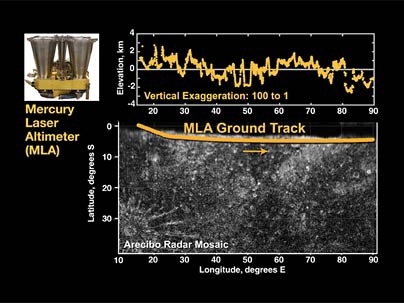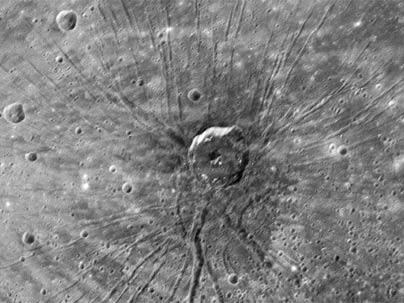
Professor Maria Zuber, head of MIT's Department of Earth, Atmospheric and Planetary Sciences, addresses a Jan. 30 NASA press conference in Washington in which results from the first mission to visit the planet Mercury in 30 years were unveiled. The MESSENGER spacecraft, which will later go into orbit around the planet, made a flyby in mid-January and returned a wealth of new data, revealing a surprisingly active planet with ridges that extend for hundreds of miles and an enigmatic spider-like pattern of cracks in the floor of one large crater. Zuber heads the science team's Mercury Laser Altimeter analysis, and also chairs the geophysics group. Photo / NASA/Bill Ingalls
A version of this article appeared in MIT Tech Talk on February 6, 2008 (download PDF).







